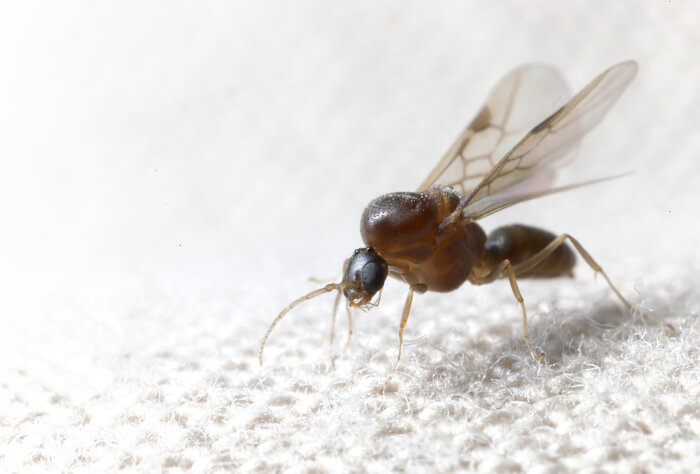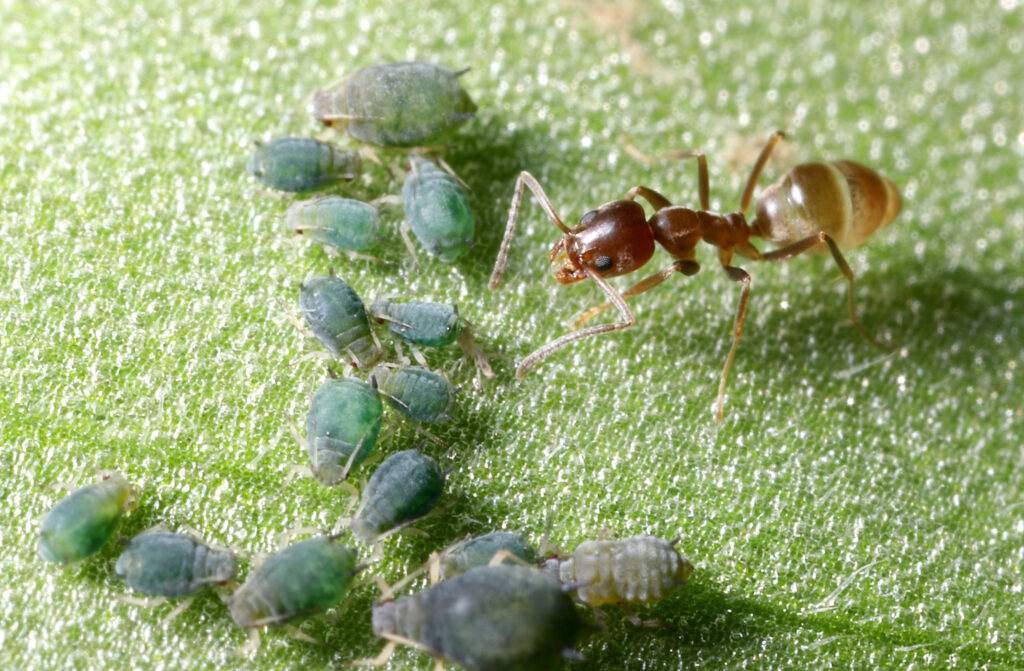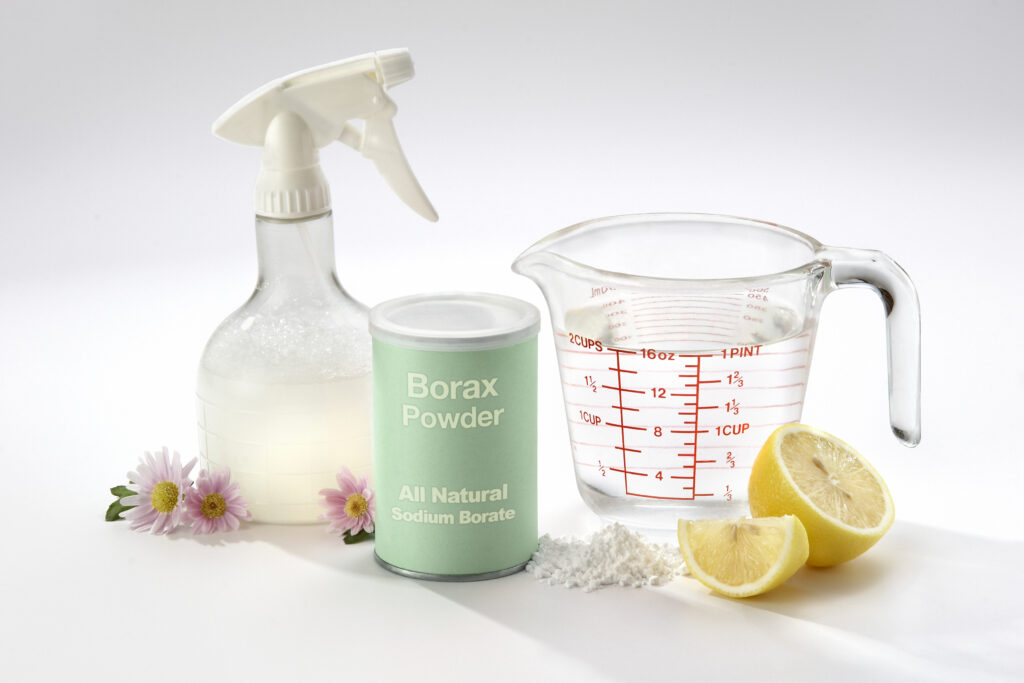


Argentine ants are among the most problematic ant pests. It’s one of the world’s most invasive species, according to the World Conservation Union. While most of the other ant species only have one queen, Argentine ants can have multiple queens and this is why they can build more colonies close to the primary nest. In a single year, you can have a web of interconnected ant nests that can spread more than 650 feet in a single year. This is why Argentine ant bait is a serious business when it comes to ant control.
So what do you need to know about Argentine ants and how to create Argentine ant bait? Argentine ants are not harmful to humans, but they are very invasive and they are an immense hassle to deal with if they infest your home. Argentine ant bait is the best long-term solution to eliminate these ants. The most common baits used are sugar, protein, and borax-based ones.
The colonies of Argentine ants can become so immense that they can take over whole city blocks. A BBC article reported about a supercolony of Argentine ants in Southern Europe that spreads over 3700 miles. You can just imagine how many insects that colony holds.
In order to eliminate Argentine ants effectively, it’s important to know how to spot them first. These ants are about 2.2 to 2.8 millimeters long and light to dark brown in color. The ant workers are the same size. There are things to look out for in order to differentiate Argentine ants from other species.
Argentine ants have no stinger and have five to eight large teeth on their mandibles. They have a 12-segment antenna, with the first one as long as their heads. A single node separates their hind from the front section of their bodies. Unlike other ant species, Argentine ant trails are often made of at least five individual ants traveling side by side and these trails can be found moving up trees and buildings in search of food. Also, when you crush an Argentine ant, there’s a musty smell that comes out, which is different from other ants, which usually gives off an acidic smell.
Argentine ants are difficult to control because of their unusual biology. Commonly referred to as “tramp species,” Argentine ants possess certain characteristics that make them successful invaders. The Argentine ant population is not aggressive towards neighboring colonies or other Argentine ants from other colonies, a trait which is called unicoloniality. However, they are aggressive towards other ants and insect species. They tend to co-exist with humans in houses and gardens.
Their colonies have more than one queen, which is a system called polygyny. A queen and a group of workers can leave one colony and build a new one nearby. While most common species have individual colonies, the nests of Argentine ants are usually interconnected and each can contain millions of insects.
Argentine ants mate inside their nests instead of swarming like the other species. After 28 days, larvae emerge from the eggs and grow into adults around 74 days after they have hatched. These ants prefer moist areas, which is why they tend to dwell in populated places in dry areas. The moisture produced by the houses and other structures serves as a major lure for these ants to build colonies in populated areas.
They were originally a native of South America, primarily Argentina, hence the name. Since then, they have spread to all continents, save for Antarctica. They are an invasive species pretty much everywhere else, from Europe and North American to the Middle East and Asia.

Most ant colonies are known to have only one queen each, but the nests of Argentine ants can hold hundreds of queens. She will mate once with a winged male and then produce fertile eggs for the rest of her life after that. She can lay as many as 60 eggs in a day. Another unusual thing about Argentine ant queens is that they help feed their young, a job usually reserved for worker ants.
The queen can also travel on foot to establish a new colony and a new nest to be built around the primary one. Workers are shared between the colonies at times, a mode which is called budding.
Because of this type of behavior from the queens, they can quickly establish a nest in another area if the Argentine ant colony’s conditions become unfavorable. Their ability to relocate is certainly an advantage over other ant species, who usually take a long time to groom a new queen. And most importantly, if a queen from another ant species dies, her colony dies along with her. In Argentine ants, if a queen dies, another queen will just move in and take over.
Because these are invasive ants, they can have major ramifications on the local ecology. They tend to displace species that are native to a particular area. For instance, the harvester ant in California can be displaced by invading Argentine ants. Now, harvester ants are food for animals such as shrews and coast horned lizards. When the harvester ants or other native ants are displaced by the Argentine variety, it will affect the food supply of these animals.
Argentine ants can also damage crops, even eating the fruits and buds of plants. They will eat almost anything produced by plants and animals, but an Argentine ant worker prefers sweets above everything else, particularly plant nectar and honeydew.
You can usually find Argentine ants nesting under rocks, dead logs, mulches, and garbage. They also thrive in cavities in shrubs or at the base of trees, along sidewalks, and under buildings. Within homes, these foraging ants are attracted to moist locations such as kitchen walls, bathrooms, and crawl spaces.
Given the biology of Argentine ants, controlling their infestation is not simply a trivial matter. Failure to control them completely can lead to yearly infestations. Fortunately, there are lots of measures you can take on to prevent these ants from getting into your household in the first place.

If your area is already infested with this invasive ant species, it’s time to implement measures to eliminate them. There are two ways to combat ant invasion: use sprays as a spot treatment and lure them using baits.
Sprays, which are classified as contact killers, can be used for both indoors and outdoors and work best as a spot treatment to kill ants that you see right before you. It can also work on an exposed Argentine ant nest and will kill not just other species of ants, but other insects as well from cockroaches to spiders. For the outdoors, there are perimeter sprays you can use to establish a barrier of protection to keep ants and other insects from getting inside your home.
Using sprays is easy for Argentine ant control but it requires finding the nests so they can be destroyed directly. This can be impossible at times since some nests are hidden deep within or beneath, in spots where you couldn’t reach them. This means you have to lure them from their hiding places with the help of baits.
When it comes to Argentine ants, fall seems to be the best time to bait them because their sources of honeydew outside are disappearing so they have to venture out to find new food sources. These ants can switch back and forth between sugar and protein baits, but they seem to be more particular with liquid sugar baits, as long as there’s 25 percent sugar. The worker ants will readily take these baits all year round to bring them back to their nests and feed to the others.
Borax or boric acid baits are also commonly used as baits for Argentine ants. In order to kill the colony, the concentration of the borate active ingredient should be between .05 and 2 percent. Using lesser amounts will not have an effect on the colony while using too much active ingredient can repel the ants and kill them before they can carry the bait back to their nests, which is precisely what you need to avoid. You need them to go back to the nests to feed the bait to the others.
If you want a quick kill of trailing ants, using higher concentrations of the ingredient will definitely work, but it’s only a short-term solution. You need a long-term solution to completely eliminate the colony. This is why baits should have low concentration and slow-acting for them to become effective in their job. Patience is definitely needed - boric acid baits may take several weeks before it becomes effective. Other active ingredients of delayed toxicity baits include abamectin, fipronil, thiamethoxam, or indoxacarb.
Learn More: Homemade Ant Bait

You can use bait stations that hold liquid or granular bait - or both. The purpose of the bait station is to protect the bait itself and keep it out of reach from animals who are not targets of the bait. There should be at least a 200 ml liquid capacity (500 ml is the best) in your bait stations. If you’re granular baits, place them in the stations as well. The same is true for gel bait, which you can also place into cracks and crevices (as long as the label approves it).
You should put the stations where the ants are trailing and near sources of moisture. Place the stations away from direct sunlight because this will make the liquid bait evaporate, which will result in the baits getting too concentrated to be effective in eliminating the colony. Also, never spray the bait stations with insecticide.
Are you having a hard time dealing with large colonies or an Argentine ant infestation in your home? If you’re in New Jersey and other nearby areas, PermaKill Exterminating is the name to call. They provide pest control services for all types of ants, including Argentine ants, red imported fire ant, carpenter ants, sugar ants, and more. They also deal with bed bugs, rodents, and everything in between. For pest control service that exceeds your expectations, call PermaKill Exterminating for one-time service or seasonal plans. Book your appointment now and make your household free from pest insect problems.